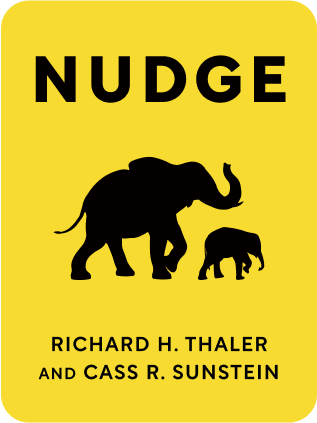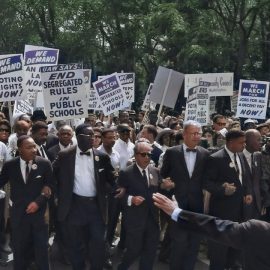

This article is an excerpt from the Shortform summary of "Nudge" by Richard H. Thaler and Cass R. Sunstein. Shortform has the world's best summaries of books you should be reading.
Like this article? Sign up for a free trial here .
What is the status quo heuristic? How does it influence decisions?
The status quo heuristic is a mental shortcut where people opt to stick with their current situation. This biased thinking can prevent necessary action. But the status quo can be harmful.
Read on to understand the status quo heuristic and the status quo bias.
The Status Quo Heuristic
Closely related to humans’ aversion to loss is our “status quo bias.” On the balance, even if our current situation leaves much to be desired, we tend to favor present circumstances over change.
In many areas, status quo heuristic is simply an interesting human quality—for example, when students choose a seat on their first day of class and continue to sit in the same seat the rest of the semester.
In other areas, however, status quo heuristic can cause real harm. Consider retirement plans like 401(k)s. A study of college professors conducted in the late ’80s found that, over the course of their entire career, the median number of changes the professors made to their 401(k) asset allocation was zero. Some of the professors, who’d married and had children over the years, still had their parents listed as their beneficiaries!
Another way to think about status quo bias is as the “whatever” heuristic. When we watch an old favorite on network TV and then, out of sheer laziness or inertia, watch the show that follows—saying, in essence, “whatever”—we’re guilty of status quo heuristic.
Consider Your Default
Due to human predilections like the status quo bias (see Chapter 1), choosers will often opt for the choice that takes the least effort: the default that requires the chooser to do nothing. And so choice architects can drastically affect outcomes by designing their default options conscientiously.
For example, say you’re currently enrolled in a particular health insurance option through your employer and you completely space on the next year’s open enrollment period. Should your employer assume you don’t want health coverage for the following year, or should it re-enroll you in the same option you had the previous year? Most of us would choose the latter, which means that’s the better default.
(Sometimes, in complex or fraught circumstances, choice architects should omit defaults. For example, if federal law mandates that schools supply student information to military recruiters but allows for opt outs, the school might default to neither option and ask parents or students to make the choice themselves.)

———End of Preview———
Like what you just read? Read the rest of the world's best summary of Richard H. Thaler and Cass R. Sunstein's "Nudge" at Shortform .
Here's what you'll find in our full Nudge summary :
- Why subtle changes, like switching the order of two choices, can dramatically change your response
- How to increase the organ donation rate by over 50% through one simple change
- The best way for society to balance individual freedom with social welfare






